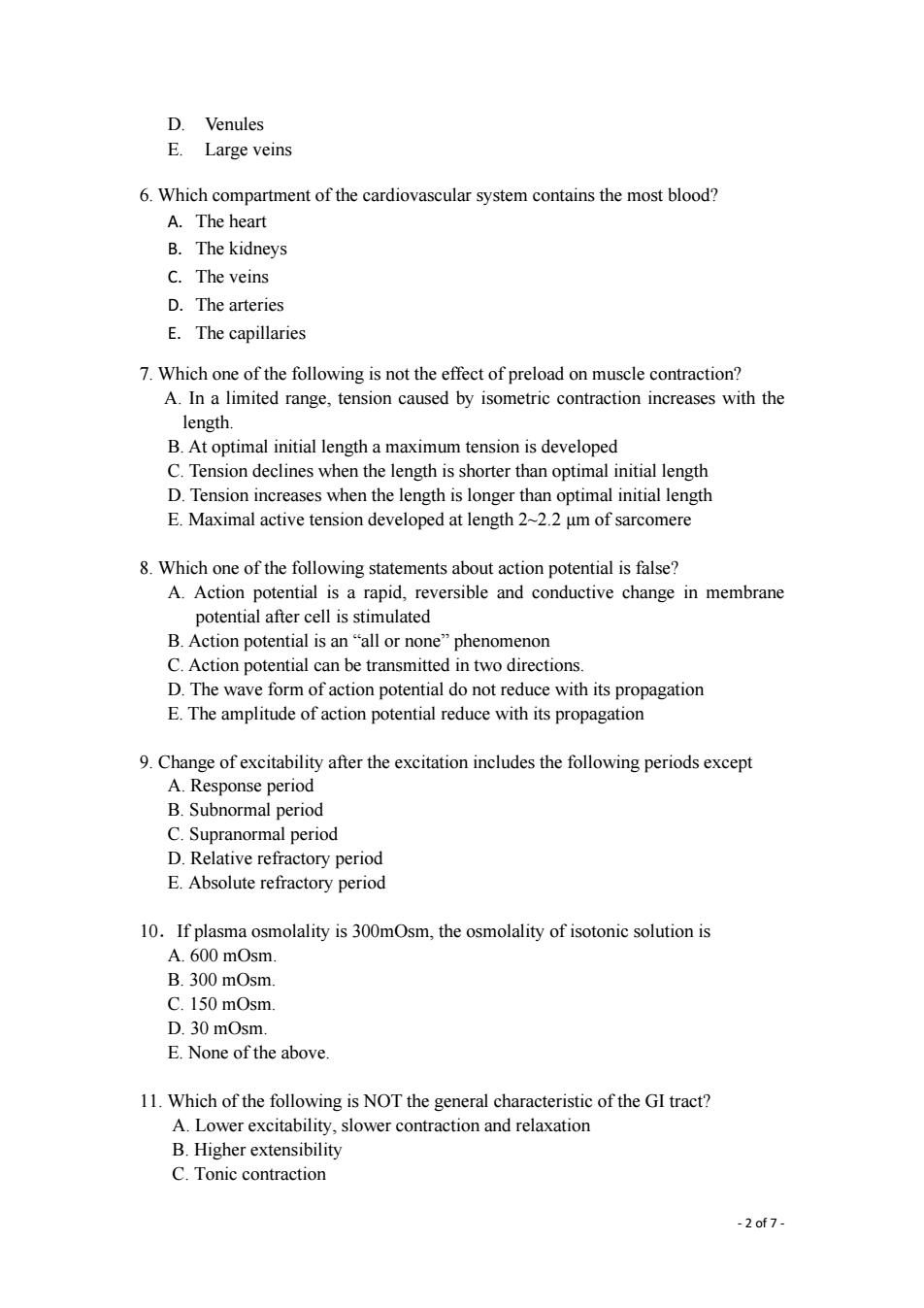正在加载图片...

D.Venules E.Large veins 6.Which compartment of the cardiovascular system contains the most blood? A.The heart B.The kidneys C.The veins D.The arteries E.The capillaries 7.Which one of the following is not the effect of preload on muscle contraction? A.In a limited range,tension caused by isometric contraction increases with the length B.At optimal initial length a maximum tension is developed C.Tension declines whe en the ength is shorter than optim al initial lengt D.Tension increases when the length is longer than optimal initial length E.Maximal active tension developed at length 2~2.2 um of sarcomere 8.Which one of the following statements about action potential is false? A.Action tential is rapid,reversible and conductive change in membrane B.Action potential is an"all or none"phenomenon C.Action potential can be transmitted in two directions. D.The wave form of action potential do not reduce with its propagation E.The amplitude of action potential reduce with its propagation 9.Change of excitability after the excitation includes the following periods except A.Response period B Subnormal period C.Supranormal period D.Relative refractory period E.Absolute refractory period 10.If plasma osmolality is 300mOsm,the osmolality of isotonic solution is A.600m0sm. B 300 mOsm C.150 mOsm D.30mOsm E.None of the above 11.Which of the following is NOT the general characteristic of the GI tract? A.Lowe slower contraction and relaxatior B.Higher extensibility C.Tonic contraction -2f7‐ 2 of 7 ‐ D. Venules E. Large veins 6. Which compartment of the cardiovascular system contains the most blood? A. The heart B. The kidneys C. The veins D. The arteries E. The capillaries 7. Which one of the following is not the effect of preload on muscle contraction? A. In a limited range, tension caused by isometric contraction increases with the length. B. At optimal initial length a maximum tension is developed C. Tension declines when the length is shorter than optimal initial length D. Tension increases when the length is longer than optimal initial length E. Maximal active tension developed at length 2~2.2 µm of sarcomere 8. Which one of the following statements about action potential is false? A. Action potential is a rapid, reversible and conductive change in membrane potential after cell is stimulated B. Action potential is an “all or none” phenomenon C. Action potential can be transmitted in two directions. D. The wave form of action potential do not reduce with its propagation E. The amplitude of action potential reduce with its propagation 9. Change of excitability after the excitation includes the following periods except A. Response period B. Subnormal period C. Supranormal period D. Relative refractory period E. Absolute refractory period 10.If plasma osmolality is 300mOsm, the osmolality of isotonic solution is A. 600 mOsm. B. 300 mOsm. C. 150 mOsm. D. 30 mOsm. E. None of the above. 11. Which of the following is NOT the general characteristic of the GI tract? A. Lower excitability, slower contraction and relaxation B. Higher extensibility C. Tonic contraction